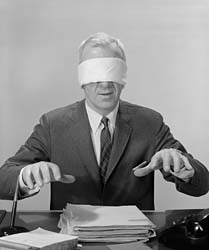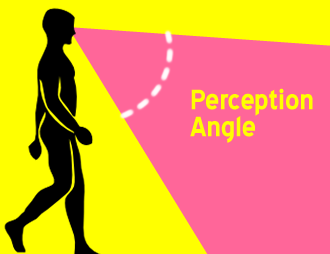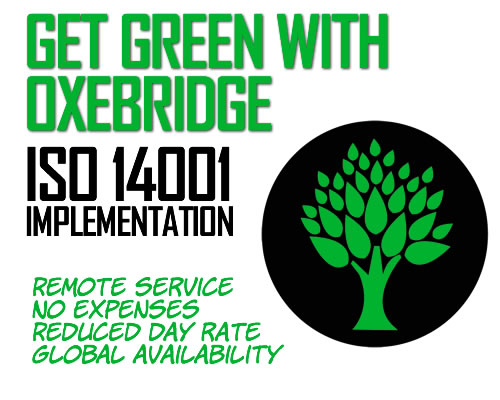 Vision is great. It helps us to drive our cars, choose our mates, and accurately spear a woolly mammoth for dinner; often in that order, if your date goes well. But when it comes to conducting audits, our eyeballs let us down. They lead us down the wrong path, and make us confident over the wrong things.
Vision is great. It helps us to drive our cars, choose our mates, and accurately spear a woolly mammoth for dinner; often in that order, if your date goes well. But when it comes to conducting audits, our eyeballs let us down. They lead us down the wrong path, and make us confident over the wrong things.
Multiple surveys over the past few decades have repeatedly reported that the top ISO 9001 nonconformities are related to:
- Document control errors
- Product identification
- Calibration
- Product preservation (especially expired shelf life materials)
What the data suggests is that client organizations are incompetent when it comes to revision control of documents, or keeping the labels on calibrated tools from falling off. Employing Occam’s Razor, the reality is even more simple, and totally contradicts that assumption: it is not that companies are statistically failing in these areas, but rather that these are the findings that auditors routinely discover due to poor auditing techniques.
Do Your Neck Exercises
Question: what do those top nonconformity types have in common? Answer: eyeballs.
Each of those findings requires merely that an auditor place their eyeballs in a straight-to-slightly-lowered position. From that perspective, things like revision letters are noticed on documents, dates on calibration stickers or chemical labels are spotted, and product lacking ID markings is discovered. An auditor can be brand new, just out of the gate, with 0 days experience, and still find nonconformities related to these clauses. Why? Because they are discovered with no physical or intellectual effort. They’re easy pickins.
This is also why so few findings are issued against the more complex requirements requiring the use of more than just eyeballs, like 4.1’s process approach requirements, or 7.3 design and development. These require using the grey stuff behind the eyeballs, and auditors get nearly no training on this. Sight is our primary sense, so it’s a given; auditors don’t need much training on how to use their vision.
But this sight-centered auditing habit leads to misleading nonconformities and improper audit findings. Noticing a document has the wrong revision on it results in a finding against 4.2.3 Document Control, when in fact the problem may well be something more risk-inducing: perhaps the company laid off its only subject matter expert and that’s why the document wasn’t revised, and a finding against 6.1 would be more appropriate.
Auditing While Blindfolded
Meanwhile the other senses — like touch and hearing — are ignored or intentionally turned off. Yet these senses add valuable sources of additional evidence that can enhance, or even correct, evidence gathered merely by the eyes. We may see something, but when applying additional senses, we find out that our assumptions based on sight were incomplete, and the result is very, very different. Use of the other senses can also open us up to finding evidence that we might not, when relying on sight alone.
Reliance on vision pushes us to lazily accept the habits of our body. The human head and neck are “programmed” to rest at a position slightly below the horizon, and so our vision falls in that angle of perception. We have to exert effort — however minute — to raise the head towards the horizon, and much more effort to lift it (and the eyes) to any position above the horizon. Consider that many of us spend all day looking down at our keyboards without much discomfort, but if we spend two hours in a front-row seat at a movie theater, looking up, we come out with neck strain.
 For auditors this means they have a pre-programmed limited field of perception, and anything outside of that field may well be missed. And — get ready, CB guys — clients know this. As a result, the top shelves are the best places to hide unidentified scrap or other dirty secrets because everyone knows the auditor will never look there. Why? Because it’s above the normal field of perception. A quick survey by Oxebridge found that auditors are 75% more likely to investigate downward — even going so far as to bend over — than they are to investigate upwards.
For auditors this means they have a pre-programmed limited field of perception, and anything outside of that field may well be missed. And — get ready, CB guys — clients know this. As a result, the top shelves are the best places to hide unidentified scrap or other dirty secrets because everyone knows the auditor will never look there. Why? Because it’s above the normal field of perception. A quick survey by Oxebridge found that auditors are 75% more likely to investigate downward — even going so far as to bend over — than they are to investigate upwards.
That’s the simplest example. There are lots, lots more.
Auditors must learn to use all their senses when auditing, in order to accurately gather objective evidence. The result, when combined with an all-important sixth sense, is a better audit report, with true “value-added” findings that can help clients generate real improvement. Plus, it results in findings supported by so much evidence, they can’t be challenged by anyone.
What’s the sixth sense?
Sorry, you’ll have to book a training event to find out.
Christopher Paris is the founder and VP Operations of Oxebridge. He has over 35 years’ experience implementing ISO 9001 and AS9100 systems, and helps establish certification and accreditation bodies with the ISO 17000 series. He is a vocal advocate for the development and use of standards from the point of view of actual users. He is the writer and artist of THE AUDITOR comic strip, and is currently writing the DR. CUBA pulp novel series. Visit www.drcuba.world








